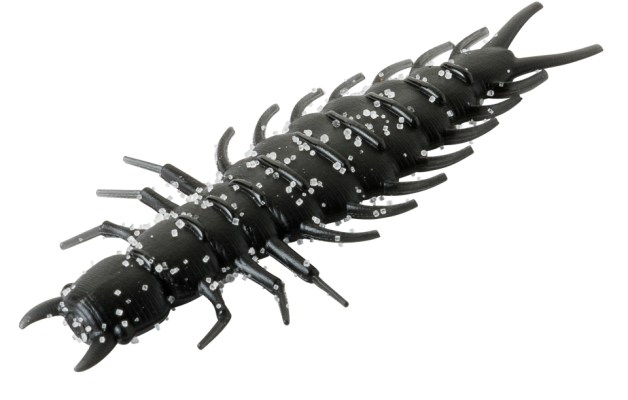
Not all polarized sunglasses are created equal. CITGO Bassmaster Classic Qualifier Ish Monroe demonstrated this to a friend when they fished a buddy-style tournament at Clear Lake, Calif. They were sight fishing when Monroe spotted a huge largemouth bass hovering over a bed 8 feet deep.
Juiced to the max, Monroe immediately began tossing baits to the bass. His partner asked him what he was casting to. Monroe's reply was incredulous: "Can't you see that fish?"
Though both anglers were wearing polarized sunglasses, Monroe's partner, squint as he might, could not see the bass. Monroe handed over his sunglasses. His partner donned them and saw the bass immediately.
"Almost all sunglasses have 100 percent UV protection, but not all polarized lenses have anything close to 100 percent polarization," says Monroe. "My buddy needed better sunglasses."
Polarization is a chemical process that aligns atoms, ions and particles horizontally on a thin film. This chemical Venetian blind blocks the harshest light, such as glare from the water that prevents you from seeing beneath the surface. Only good, ambient light reaches your eyes, which improves your vision and reduces eyestrain.
Iodine-based films exhibit excellent polarized efficiency. Usually, the tint of the lens is built into the polarizing film. Some sunglasses now deliver more than 95 percent polarized efficiency, which is what you want if you're serious about seeing what's beneath the water's surface.
Lens material
The lens material can limit polarized efficiency and optical clarity. Injection-molded polycarbonate lenses are lightweight and impact resistant, but they attain no more than about 88 percent polarized efficiency. This is because polycarbonate destabilizes iodine-based polarized film by subjecting the film to extreme heat and pressure during the molding process. An inferior polarized film must be used to withstand these stresses.
Bent polarized sunglasses place polarized film between flat sheets of polycarbonate, which are then warmed and bent to the desired lens shape. This process can incorporate iodine-based film to achieve high polarized efficiency, but bent polycarbonate yields a low quality optical lens.
Polycarbonate sunglasses also scratch easily and contain impurities that undermine optical clarity. Industry insiders often refer to it as a "dirty lens material."
Though optical quality glass lenses are heavier and not as impact resistant as injection-molded plastic lenses, you can't beat them for scratch resistance, optical clarity, and polarized efficiency. It's no surprise that the top of the line sunglasses made by Costa Del Mar feature the company's exclusive WAVE 580 polarized glass.
"The WAVE 580 lens uses a combination of polarization and technology that allows the eye to take in more light," says Ed Moody, executive vice president of Costa Del Mar. "It raises the red, blue and green areas of the light spectrum while eliminating the strong presence of yellow light, which creates glare."
Plastic lenses that are cast in molds at low heat afford another excellent option because they may incorporate the same iodine-based polarized film used with glass lenses. Costa Del Mar offers sunglasses in CR-39, a plastic-lens material used to make lightweight, clear prescription glasses. Kaenon Polarized developed its own plastic-lens material, SR-91.
"SR-91 is neither glass, polycarbonate, nor CR-39, but a radically new polarized-lens material invented by our engineers," says Steve Rosenberg, president of Kaenon Polarized. "It combines the highest optical quality of the finest glass lenses with the lightness and strong impact resistance of the best polycarbonate lenses."
One reason high-end polarized sunglasses carry price tags that range from about $100 to well over $200 is that they require meticulous, high-tech manufacturing processes. The lenses typically include more than eight layers.
Lens tint and polarization
There is no such thing as a clear polarized lens. Some type of tint is necessary to allow polarization to work, and darker tints achieve higher polarized efficiency.
Generally, any lens that transmits more than 28 percent of the light cannot reach 99 percent polarized efficiency, despite the hue. If you use a light lens tint, it will not cut through glare as well as a darker lens. Rosenberg claims that Kaenon is the first polarized brand to create lighter lens tints that allow up to 40 percent light transmission and still maintain high levels of polarized efficiency — 95 percent or more. Check with the manufacturer to verify the percentage of polarized efficiency with their various lens materials and tints.
For your eyes only
Texas bass pro Cody Bird got an eye-opener when he met with fellow members of the Skeeter pro staff for a photo shoot at Lake Fork. As the group gathered at the dock during a lunch break, they exchanged sunglasses for an impromptu testing session.





